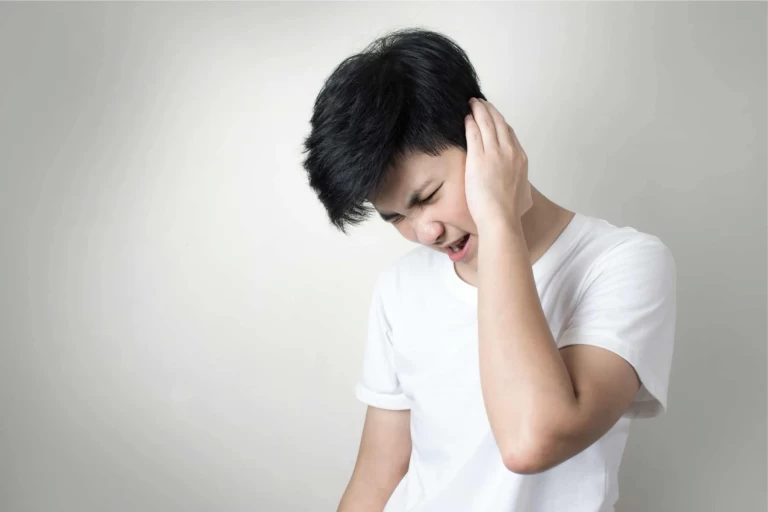
Upper Cervical Chiropractic for Vestibular disorder
The vestibular system consists of the brain and parts of the inner ear that help in controlling eye movements and balance. If the system is damaged because of a vestibular disorder, injury, aging or disease, it can result in the following symptoms:
- Vertigo
- Spatial disorientation
- Visual disturbance
- Auditory changes
- Cognitive changes
However, other symptoms are possible, and the symptoms are not experienced by every person. The symptoms of vestibular disorder vary according to the type and severity of the disorder. People suffering from the vestibular disorder may appear to be attention-seeking, overly anxious, lazy and inattentive.
It may be difficult to perform routine daily tasks, such as getting out of bed in the morning or functioning at work or school.
Vertigo
Vertigo is described as a whirling or spinning sensation or a feeling that the world is moving when it is not. The symptoms present with movement, in specific positions and while sitting still. People suffering from the vestibular disorder feel lightheaded rocking or floating sensations and as if they are being heavily pulled in one direction.
Spatial Orientation
Patients with vestibular disorder have difficulty walking straight and balancing which causes muscle and joint pain. They appear to be clumsy and have difficulty with coordination and maintaining a straight posture, the head may tilt to the side.
Furthermore, they have a tendency to touch or hold the head while sitting and hold onto something when standing. They also find it difficult to walk in the dark and are sensitive to changes in footwear or walking surfaces.
Visual Disturbance
People suffering from the vestibular disorder have difficulty tracking or focusing on objects with the eyes; for example, words on a page or objects appear to be doubled, blur, floating, bouncing or jumping. They feel uncomfortable in busy visual environments, including being surrounded by patterns, stores, crowds, and traffic.
There is sensitivity especially to fluorescent, flickering and moving lights and glare. In addition to this, there is sensitivity to digital televisions and certain types of computer monitors. There is an increase in discomfort when focusing on objects at a distance and a tendency to focus more on nearby objects.
Poor depth perception, difficulty walking in the dark and night blindness are also presenting symptoms.
Auditory Changes
The vestibular disorder causes fluctuated or distorted hearing or hearing loss. Patients often complain of tinnitus, whooshing, buzzing, roaring, ringing or other noises in the ear. In addition to this, people with vestibular disorders are sensitive to loud environments or noises. Sudden loud sounds may increase imbalance, dizziness or vertigo.
Cognitive Changes
People suffering from vestibular disorder are easily distracted and have difficulty paying attention and concentrating. Other cognitive changes, in addition to physical or mental fatigue, include short-term memory lapses, forgetfulness, difficulty comprehending instructions or directions, disorientation, confusion, and difficulty understanding conversation, particularly when there is background movement or noise.
Psychological Changes
Psychological changes include loss of self-esteem, self-confidence, and self-reliance. Other symptoms depression, social isolation, panic, and anxiety are also present.
Other symptoms of the vestibular disorder include:
- Slurred speech
- Headaches
- Ear pain
- A sensation of fullness in the ear
- Motion sickness
- Nausea or vomiting
However, when there are no obvious or severe symptoms, an inner ear disorder may be present. It is, therefore, important to note that these individual symptoms can also be caused because of other unrelated conditions.
Upper Cervical Chiropractic Treatment for Vestibular disorder
Chiropractic neck adjustments have been known to improve the condition of patients in many types of disorders, such as vestibular disorder. The upper cervical spine is located in the neck area, just beneath the base of the skull, protecting the brain stem.
The brain stem sends signals from the body to the brain and controls all normal bodily functions. It is also responsible for healing sickness and repairing injuries. In case of a malalignment, the cervical spine falls out of place and can press against the brain stem causing it to not function properly.
If this happens, signals become distorted and the body either does not respond properly or does not respond at all, moreover, there are many negative changes that begin to take place. Chiropractic adjustments often improve disorders that involve issues with vision, hearing, and balance.
The most suitable chiropractic treatment for the vestibular disorder is referred to as an upper cervical adjustment. The treatment focuses on adjusting the neck area to take the pressure off the brain stem. The adjustments include gentle and precise motions to move the upper cervical spine back into place.
It restores the proper brain to body communication and releases pressure that is placed onto the brain stem. Similarly, the body begins to heal and repair itself immediately, moreover, it continues to do so as long the correct adjustment is held.
Patients with the vestibular disorder show great improvement after one upper cervical adjustment. The goal of the treatment is to continue to adjust the upper cervical area of the spine until the body repairs the surrounding soft tissues and becomes strong enough to hold the bones in place.
The alignment of the upper cervical spine helps regulate blood flow which could be causing vertigo and headaches, moreover, it helps to relieve pain caused by torn ligaments or tight muscles. Upper cervical adjustments can also be used for moving parts of the inner ear back into its proper place.
The body changes itself significantly to repair itself back to health when the brain stem enables your system to return to functioning and communicating normally.
If you have a vestibular disorder and are in search of a safe and all-natural alternative to target the cause of the vestibular disorder rather than focusing on the symptoms, upper cervical chiropractic treatment should not be overlooked.
The brain stem is powerful, therefore, having a healthy brain is quite important. If any harm is placed on the brain stem, it can cause a number of complications which, if left untreated, can worsen over time, including the development of the vestibular disorder.
Nonetheless, patients who have undergone upper cervical chiropractic treatment in addition to medication and surgery have reported great improvements.




Leave a comment